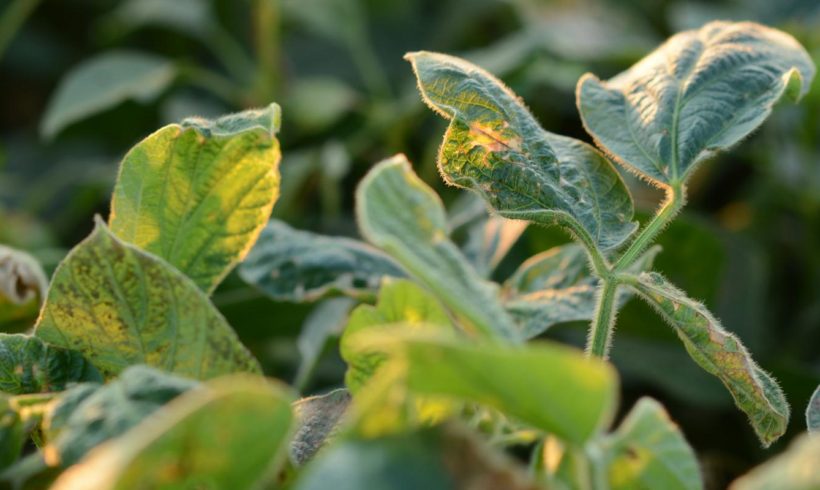Continuing complaints about dicamba herbicide drift in soybean applications lead to this decision.
 Indiana regulators recently took steps to set the cutoff date for spraying dicamba herbicide products in dicamba-tolerant soybeans as June 20. If the decision stands, you won’t be able to spray those specific dicamba products after that date.
Indiana regulators recently took steps to set the cutoff date for spraying dicamba herbicide products in dicamba-tolerant soybeans as June 20. If the decision stands, you won’t be able to spray those specific dicamba products after that date.
Robert Waltz, state chemist and seed commissioner and head of the Office of Indiana State Chemist, announced intentions to seek the change in late November. OISC forwarded a request asking U.S. EPA to grant a FIFRA Section 24(c) special local need registration for the use of dicamba on soybeans in 2020. State labels for these products would carry this provision: “Do not apply this product after June 20, 2020.”
“This cutoff restriction was reached after exhaustive complaint incident analysis by OISC over the last three years, as well as consultation and input from the Indiana Pesticide Review Board and stakeholders in the industry,” Waltz says.
Dave Scott, pesticide administrator with OISC, reports dicamba-complaint claims received by OISC were up again in 2019. It’s the third straight year that OISC has received a significant number of dicamba drift claims.
What happens now? Scott says EPA has 90 days from the date of the request to object. However, other states requested earlier spray cutoff dates using the same procedure for 2019. Illinois, which saw dicamba complaints more than double in 2019 compared to 2018, issued a request for a June 20 cutoff date in 2020 a few weeks before Indiana. Illinois also included a provision requiring these products not be sprayed if the forecast is for temperatures above 85 degrees F.
Other states that already have restrictions not in the federal label, or which are requesting them, include Arkansas, North Dakota, South Dakota and Minnesota. If EPA objects to Indiana’s rule, it likely also would object to those in other states. Insiders don’t believe that’s likely.
Companies that have product registrations could appeal OISC’s product registration to the Indiana Pesticide Review Board. Those companies include Bayer, BASF, Corteva Agriscience and Syngenta.
Moving forward
Bill Johnson, Purdue University Extension weed control specialist, provides information to the Indiana Pesticide Review Board and OISC but doesn’t vote on rule changes. However, he’s supportive of the label change.
“We continue to see drift complaints from postemergence applications of dicamba in dicamba-tolerant soybeans,” he says. “It’s a step in the right direction.”
Based on drift complaints in states that moved up cutoff dates in 2019, it’s unclear if the change will result in significantly fewer complaints, Johnson adds.
Why didn’t Indiana also add a temperature restriction? “It was discussed, but it appears drift issues are more related to temperature inversions and other environmental conditions, not just temperature,” Johnson says. “It would also be difficult to enforce.”
Farm Progress asked Bayer Crop Science to comment after Illinois issued cutoff date and temperature restrictions. Charla Lord, with Bayer public affairs and sustainability, issued this response: “While Bayer is pleased Illinois growers will have access to XtendiMax, we had hoped the department would recognize the existing federal label requirements that offer growers certain parameters for applications — such as apply prior to beginning bloom or no more than 45 days after planting in soybeans.”
Farm Progress also asked for comments about the Indiana ruling. Comments from Bayer were not available by press time.
Holly Spangler, editor of Prairie Farmer in Illinois, contributed to this story.
